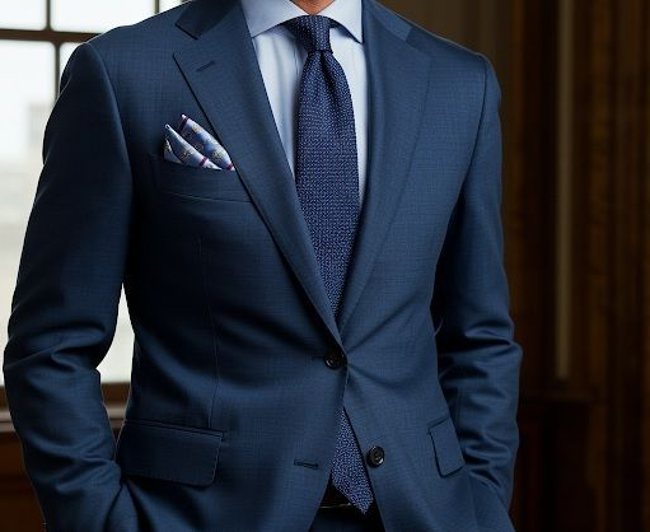
A man’s tie is an accessory worn around the neck, usually tied under the shirt collar so that it hangs down onto the chest. It is an important item of a man’s wardrobe that can emphasize the style, individuality, and even social status of the owner.
History of the tie
The prototypes of the tie appeared in Ancient China and the Roman Empire, where warriors wore pieces of cloth around their necks. However, the modern tie originates in the 17th century, during the Thirty Years’ War. Croatian mercenaries in the service of the French army wore neckerchiefs that they tied in a knot. King Louis XIV liked this uniform detail, and he introduced the tie as a mandatory accessory at court. The French name for the tie comes from the Croatian word «cravate» (Croat).
In the 19th century, ties became more diverse in shape and material. At the beginning of the 20th century, American Jesse Langsdorf patented a method of cutting a tie on the bias, which allowed it to hold its shape better and wrinkle less. This method is still used today.
Types of Men’s Ties
There are many types of men’s ties, which differ in shape, width, material and tying method:
- Classic tie (Four-in-hand) is the most common type of tie, has a standard width and length.
- Skinny tie – a more modern option, has a small width. Suitable for slim men and informal looks.
- A wide tie is a traditional option that is now considered more formal. It is suitable for large men and formal events.
- Bow tie – a symmetrical tie tied in the shape of a butterfly. Worn with tuxedos and tailcoats, and can also be part of an informal style.
- Ascot tie — a wide tie that is loosely tied and secured with a pin. Used for formal events and weddings.
- Plastron — a wide tie that covers the shirt front. Also used for formal occasions.
- Bolo tie — a cord with a decorative clasp. Popular in the western United States and used in informal style.
- Knitted tie — a tie made of knitted material, has a more textured surface and is used in casual style.
Ties also vary in the material they are made from: silk, cotton, wool, linen, polyester, and other blended fabrics. The choice of material affects the appearance, texture, and draping of the tie.

How to Choose a Men’s Tie
When choosing a tie, there are several factors to consider:
- Tie width: should match the width of the jacket lapels and the man’s build.
- Tie length: A properly tied tie should reach the middle of your belt buckle.
- Color and pattern: the tie should match the color of the shirt and suit. There are general rules for combining colors and patterns, but you can also experiment, keeping a sense of proportion. If the shirt or suit has a pattern, it is better to choose a single-color tie, and vice versa.
- Material: Choose the material depending on the season and style of clothing. Silk is considered a classic and elegant option.
- Occasion: classic ties in calm tones are suitable for business meetings, more elegant options are suitable for special events, and knitted ties or ties with interesting prints are suitable for everyday wear.
How to Care for a Men’s Tie
Proper care will help maintain the appearance of your tie for many years:
- Storage: It is better to store ties straightened on special hangers or rolled up to avoid creases. It is not recommended to leave a knot on the tie after wearing it.
- Cleaning: Most ties are not recommended for machine washing. Stains are best removed manually using special products or dry cleaned.
- Ironing: iron the tie very carefully, through a damp cloth and at a low temperature, so as not to damage the fibers. It is best to use a steamer.
- Wearing: It is not recommended to wear the same tie every day, as it needs time to regain its shape.
A man’s tie is not just an element of clothing, it is a way to express yourself and create a complete image. A properly selected and well-groomed tie can become an important detail of your style.